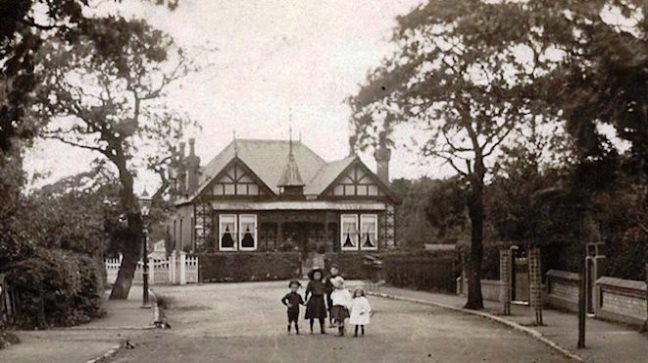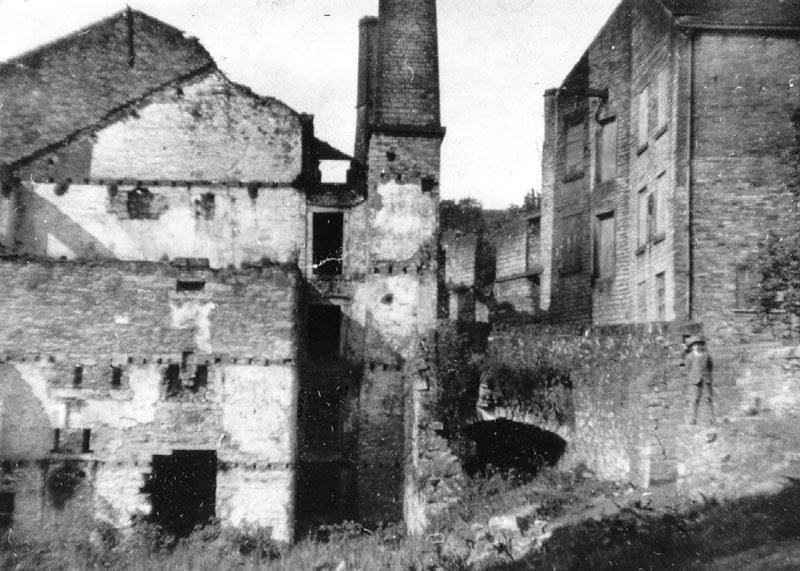Meetings 2017 - 2018

The Liverpool cow houses were home to over 4,000 cows, providing local people with fresh milk and cheese. The practice peaked in the early 1900s when there were 900 establishments across the city.
David Joy’s talk tells the story of the Pennine Dales farmers who, in the mid-1800s, rode the wave of the Industrial Revolution and relocated to Liverpool to keep cows in their backyards to sell fresh milk to the city's growing population. The history of the cowkeepers is illustrated using material from David's own family history and is followed right up until the 1960s, when a way of life that had lasted for more than a hundred years, finally came to an end.
Neil Mullineux reports......
- Details
- Category: Meetings 2017 - 2018
- Hits: 7609

Sue Bailey started in an almost apologetic way by explaining exactly where Woodsmoor was. With her knowledgeable audience it was hardly necessary but it served as an excellent introduction. She took us through the evolution of the area, slowly and gradually, starting in 1336, and tracing the changes over the years. But it was not a typical evolution. For example, it got its own railway station only in 1990 - a mere 130 years after the railway first passed through.
- Details
- Category: Meetings 2017 - 2018
- Hits: 6244
 The website promised us a gripping tale and that is exactly what we got - a steady rise to a position of some eminence in local society - a dramatic fall from grace - a slow climb back then, once again, disgrace and punishment. A very Victorian moral tale worthy of Charles Dickens. And it all happened to a local man. Neil first discovered this fascinating episode when reading Tony Jones’ book on Bridges, Highways and Turnpikes and then found out much more as he researched the Isherwood family at Marple Hall.
The website promised us a gripping tale and that is exactly what we got - a steady rise to a position of some eminence in local society - a dramatic fall from grace - a slow climb back then, once again, disgrace and punishment. A very Victorian moral tale worthy of Charles Dickens. And it all happened to a local man. Neil first discovered this fascinating episode when reading Tony Jones’ book on Bridges, Highways and Turnpikes and then found out much more as he researched the Isherwood family at Marple Hall.
- Details
- Category: Meetings 2017 - 2018
- Hits: 4256

Situated on the northern edge of the city centre, the area known as Shudehill was at the epicentre of Manchester’s phenomenal rise to prominence as a manufacturing centre. Much of it was flattened by bombing in WW2 but it is only in more recent times that proposed development by the CWS has allowed any serious archaeological investigation. In 2005, the site featured on the TV programme Time Team and their 3 day excavation confirmed it was the site of Arkwright's mill. Ten years later, when the area was earmarked for redevelopment, Salford Archaeology led an extensive dig/survey of the site, revealing much more information about housing conditions as well as the evolution of alternative methods of powering early cotton mills.
- Details
- Category: Meetings 2017 - 2018
- Hits: 9311
Read more: Jan' 2018: Ian Miller - Arkwright’s Shudehill Mill

Anne began with an aside - explaining something that has puzzled us for a long time. Green Badge Guides specialise in a particular area whereas Blue Badge Guides cover the north west.
However, Blue or Green, they were all agreed that Manchester was a good place to party. It was ever thus. Edmund Harold, Manchester’s Samuel Pepys, described in detail going out on New Year’s Eve in 1712 and then went into rather more detail about how he felt the next day. ‘Never again’; but the next year he described exactly the same sequence. Will we never learn?
Manchester has a lot of pubs; a lot of very good pubs; and at various points throughout her talk Anne sprinkled it with a series of names (or were they recommendations?)
- Details
- Category: Meetings 2017 - 2018
- Hits: 4768
Read more: Dec. '17 : Anne Beswick - 'Manchester Drunk & Sober'
 Judith has always given us interesting talks but this time she tried something different. Rather than give a detailed analysis of a single topic, she elected to give a broad overview of the rise, the dominance and then the slow decline of the textile industry in north west England. In the process she demonstrated how Marple and Mellor fitted into that history. An ambitious tour de force!
Judith has always given us interesting talks but this time she tried something different. Rather than give a detailed analysis of a single topic, she elected to give a broad overview of the rise, the dominance and then the slow decline of the textile industry in north west England. In the process she demonstrated how Marple and Mellor fitted into that history. An ambitious tour de force!
- Details
- Category: Meetings 2017 - 2018
- Hits: 6344
Read more: Nov. '17 : Judith Wilshaw – ‘Marple & Mellor - A Textile Tale’

Wendy and Barrie Armstrong were introduced as giving us “two for the price of one” and they certainly did, as they seamlessly swapped roles during their presentation. They both retired early in order to indulge in their passion - a love of the Arts and Crafts movement and that love was clearly communicated throughout their joint talk.
(Editor’s note: left, Redcroft & Fencegate 1895, Middleton. Redcroft was Edgar Wood's own home. Wood was regarded as a proponent of the Arts and Crafts movement. So busy was he in his attic studio, where he worked on his buildings, created paintings and designed furniture, that he installed a speaking tube to communicate with downstairs.)
- Details
- Category: Meetings 2017 - 2018
- Hits: 4491
Read more: Oct. '17 : Wendy and Barrie Armstrong - 'Arts & Crafts in the Marple Area'

Queues formed, money paid, forms filled, music heard, history told, tea taken doors locked, good night.
The evening in a sentence, but what lies behind those words? Yes, it was that September time again, not back to school for those that trooped into the foyer of the church, that was long ago, but a time to pay for membership or a visit, renew or join, cheque or cash.
Over ninety people sat down and faced the front. Are you sitting comfortably? Then the evening can begin. Chairman Ann Hearle welcomed members both old and new and introduced our speaker, Peter Wadsworth.
- Details
- Category: Meetings 2017 - 2018
- Hits: 6286
Read more: Sept. '17 : Peter Wadsworth – ‘Strawberry Studios’

